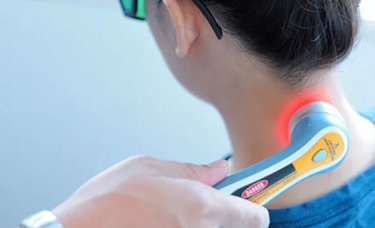

MYOFASCIAL TRIGGER POINTS... UNRAVELING THE MYSTERY OF PAIN.
Trauma to the body can occur as a macrotrauma (e.g. whiplash, road traffic accident, sports injury, surgery) or microtrauma (e.g. prolonged poor posture).
The myofascial system is your connective tissue network of fascia and muscle that forms an interconnecting web supporting the human body. It also provides a conduit for movement, transport of lymph and nutrients.
Restriction with formation of trigger points will lead to pain, restricted range of movement and potentially an array of other symptoms as diverse as headaches, seizures, numbness, autonomic dysfunction, genital pain, and dizziness. It has been reported that up to 85% of pain in a general practice setting is caused by trigger points (Cummings and White, 2001).
WHAT IS A TRIGGER POINT?
A trigger point is an area of hyperirritable muscle that when pushed creates a regional aching pain. It can be palpated (or felt) as a taut band. The pain does not follow a neural, dermatomal pattern created by aggravation of a nerve root and often the pain will be distant from the source of the trigger point. 620 Trigger Points have been identified and documented with specific referral patterns. The early work was conducted over many years by two Drs: Travell and Simons.
HOW ARE THESE TREATED?
Conventional stretching is not advised for treatment of these trigger points as you are likely to stress a muscle already under stress and compound the problem. The first step is a complete evaluation by a Physiotherapist who will identify the problem. Following this soft tissue techniques vary. The most common is direct pressure followed by a gentle stretch to recover normal muscle length. Other methods include laser therapy, dry needling and PNF/muscle energy techniques.
TREAT THE UNDERLYING CAUSE
Often trigger points will return if the underlying cause is not treated. Sometimes this is a joint dysfunction, which can be eased with mobilisation and often it will be an ergonomics issue that your therapist can advise you on and provide exercises to help correct.
Following traumatic injuries such as whiplash, before a trigger point is treated, joints that need to be stabilized will be stabilized through strengthening, otherwise treatment would be unsuccessful and possibly detrimental (Thompson, 2001).
Other advice on diet and lifestyle may also be given.
References:
Alvarez, D.J., Rockwell P.G. (2002) Trigger Points: Diagnosis and Management. Fam Physician. Feb 15;65(4):653-661
Chen. Q et al (2007) Identification and quantification of myofascial taut bands with magnetic resonance elastography. Ach Phys Med Rehabil 88:1658-1661
Thompson B 2001 Neuromuscular massage therapy perspective. Journal of Bodywork and Movement Therapy 5(4): 229-234